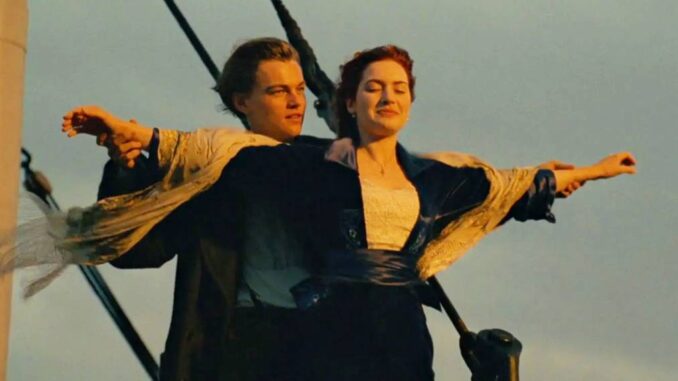
The Buoyancy of Belief: What a Splintered Door Reveals About Titanic and Us
Few cinematic images are as etched into the collective consciousness as Rose DeWitt Bukater, floating amidst the icy debris of the Titanic, clinging desperately to a piece of ornate flotsam, while her beloved Jack Dawson, shivering and resolute, slowly succumbs to the hypothermic embrace of the North Atlantic. It is a moment of profound sacrifice, a tragic zenith in a film built on grand romance and cataclysmic disaster. Yet, for decades, this heart-wrenchwrenching scene has been dogged by a persistent, almost mocking, question: Could Jack have fit on that door with Rose? The internet, in its infinite wisdom and meme-generating prowess, has offered countless visual "proofs" that indeed, there was ample room for two. Now, James Cameron, the meticulous visionary behind the epic, has finally weighed in with a definitive, scientific explanation, transforming a pop culture quibble into a fascinating lens through which to examine filmmaking, artistic intent, and the enduring power of a story that transcends literal accuracy.
The controversy surrounding "the door" stems from a powerful, primal desire for a different outcome. Audiences, having invested hours in the burgeoning love story of the star-crossed lovers, found Jack's death almost unbearably cruel. The visual evidence, to many, seemed to contradict the narrative necessity: why couldn't they both have survived? It became a focal point for fan frustration, a perceived plot hole that gnawed at the otherwise meticulously crafted world Cameron had built. The question wasn't just about space; it was about fairness, about the violation of a romantic ideal. Jack’s final, whispered "I’ll never let go," even as he did, in essence, let go of life, amplified the poignancy and, for some, the perceived illogicality of the scene.
Cameron, a director renowned for his obsessive research and technical precision – a man who practically built his own deep-sea submersibles to explore the Titanic wreck – understood this audience outcry. His recent explanation, far from being a defensive retort, is a masterclass in separating narrative imperative from scientific possibility. He didn’t just shrug; he conducted a scientific study. With two stunt people of similar mass to Rose and Jack, they recreated the scene on a replica of the prop. What they found, as Cameron meticulously explained, wasn't just about the area of the door, but its buoyancy and stability.
"If they had both gotten on it," Cameron revealed, "it would have submerged to a point where it was no longer able to support them, and they both would have been in hypothermia and died." The "technical error," if one could even call it that, wasn't in the door's size, but in the audience's focus on visible surface area over the complex dynamics of displacement and center of gravity. The goal wasn't just to stay afloat, but to stay out of the deadly freezing water enough to delay hypothermia. Even if they both scrambled on, the added weight would have dipped the improvised raft below the critical thermal threshold, making their survival virtually impossible. The "door," as Cameron demonstrated, was a last, desperate, single-person life raft, a cruel twist of fate that ensured only one could endure the ordeal long enough to be rescued.
This explanation, however belated, illustrates several profound truths about cinema and human nature. Firstly, it underscores the tension between artistic vision and scientific accuracy. Cameron, the realist, knew the physics. But Cameron, the storyteller, also knew the narrative beat required. Jack's death wasn't an accidental oversight; it was an integral part of the tragedy, a necessary sacrifice that cemented Rose's transformation from a stifled debutante into a survivor. The "technical error" from the audience's perspective was, from the director's, a narrative necessity disguised by the illusion of proximity. The film needed a heartbreaking, definitive end to their love story, and physics, however brutal, provided it.
Secondly, it highlights the power of audience engagement and interpretation. The fact that a seemingly minor detail could spark decades of debate, memes, and even scientific experimentation (albeit, initially, by the fans themselves) speaks volumes about Titanic's immersive quality. Audiences don't just watch; they invest, they question, they care. The "door" became a proxy for the film's emotional impact, a symbol of the collective yearning for a different, happier ending. Cameron's explanation, in a way, validates this engagement, acknowledging the depth of feeling his film evoked, even if it means correcting a long-held misconception.
Finally, Cameron's intervention serves as a testament to the enduring legacy of iconic moments. A simple prop, a piece of wood, became a crucible for a debate that transcended the film itself. It shows that even a director as meticulous as Cameron understands that once a film is released, it takes on a life of its own, subject to countless interpretations and reinterpretations. His explanation isn't just about the physics of a splintered door; it's about setting the record straight on a pivotal dramatic choice, reasserting the intentionality behind what many perceived as an oversight.
In the end, the "technical error" in Titanic's iconic scene with Rose and Jack isn't an error at all, but a beautifully illustrative moment. It reveals James Cameron's unwavering commitment to both realism and dramatic imperative. More importantly, it shines a light on the intricate dance between creator and audience, where a director's meticulously crafted vision meets the audience's passionate desire for narrative justice. The debate over the door, now settled by science, proves that a film's power lies not just in its spectacle, but in its ability to lodge itself so deeply in our hearts and minds that we continue to argue, decades later, over the cruel physics of love, loss, and the unyielding buoyancy of a tragic story.
